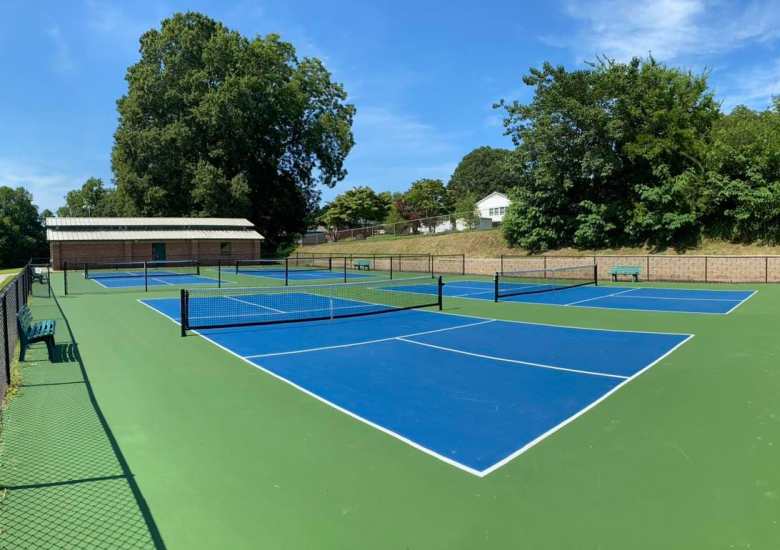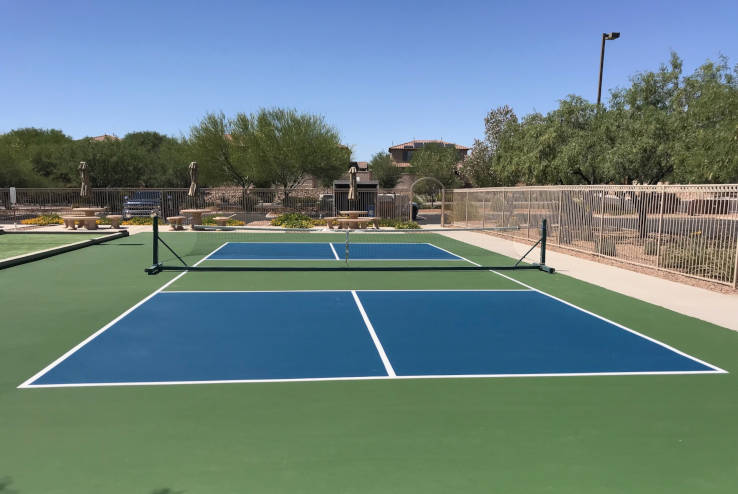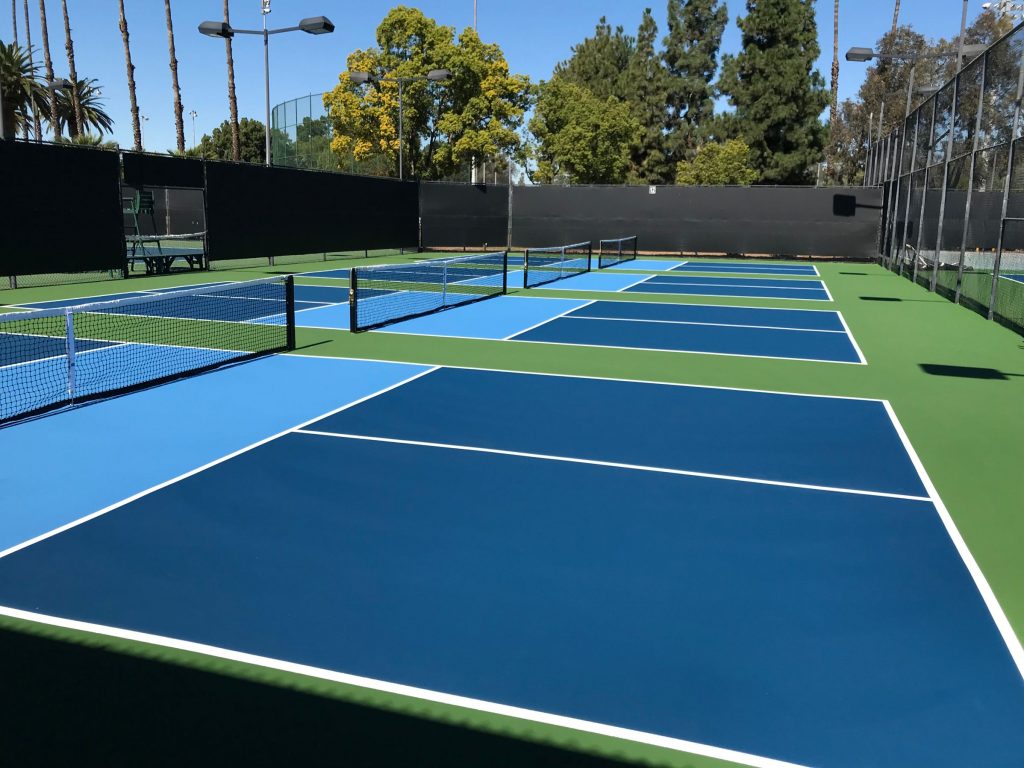Typical Mistakes to Avoid in Your Pickleball Court Construction Process
Typical Mistakes to Avoid in Your Pickleball Court Construction Process
Blog Article
Navigating Regulations for Pickleball Court Building in Your Area
Creating a pickleball court in your location requires a nuanced understanding of different neighborhood regulations, including zoning regulations, building licenses, and safety and security requirements. Involving with neighborhood authorities and the community is important for making certain compliance and cultivating assistance.
Understanding Regional Zoning Regulations
When considering the building of a pickleball court, comprehending neighborhood zoning laws is critical to ensuring compliance and preventing possible lawful concerns. Zoning regulations dictate exactly how land can be utilized and typically include specs relevant to entertainment centers. These laws can vary considerably by community, influencing variables such as court positioning, dimension, sound, and lights levels.
Prior to starting building and construction, it is important to seek advice from the local zoning board or planning department to determine the particular regulations that relate to your residential property. Particular zones may restrict entertainment tasks, while others may require specific authorizations or adherence to certain guidelines. It is also essential to consider setbacks, which establish just how far structures have to be from property lines or various other buildings.
Additionally, exclusive advancements, such as property owner associations (HOAs), might impose their very own policies concerning the construction and usage of pickleball courts. Comprehending these regulations can protect against expensive modifications or lawsuits down the line. Involving with local stakeholders and community participants can provide valuable understandings and foster support for your task, making sure that it aligns with the area's needs and expectations.
Acquiring Necessary Building Permits
How does one navigate the intricacies of getting required building licenses for a pickleball court? Typically, you will need to send a thorough website plan that describes the suggested court measurements, products, and layout.

As soon as permits are acquired, it is critical to comply with any type of examination schedules and demands throughout the building and construction stage. Maintaining communication with regional authorities will certainly promote a smoother approval process and help prevent prospective obstacles. By extensively preparing and understanding the permitting landscape, you can successfully navigate the complexities included in building a pickleball court while staying certified with all regional guidelines.

Assessing Environmental Influence
An extensive analysis of environmental effect is important when preparing the construction of a pickleball court. This analysis helps recognize prospective results on local ecosystems, water resources, and neighborhood visual appeals. Trick elements to think about consist of site choice-- making certain that the court is not developed on environmentally delicate land, such as marshes or habitats for threatened varieties
Soil stability and drain patterns must be assessed to prevent erosion and water pooling, which might adversely influence bordering vegetation and wildlife. Additionally, the option of products is essential; opting for eco-friendly and sustainable options reduces environmental damage.
The application of efficient stormwater administration methods is one more crucial element, as it helps reduce overflow and sedimentation. Engaging with local ecological firms can give beneficial understandings into policies and best practices specific to your location.
Finally, neighborhood input can be helpful in recognizing any type of local environmental problems and cultivating support for the project. By conducting a comprehensive environmental impact analysis, stakeholders can make sure that pickleball court building aligns with index lasting techniques and contributes positively to the community's eco-friendly health and wellness.
Following Security Standards
Making certain conformity with security standards is crucial for the effective building and procedure of a pickleball court. Sticking to established safety and security regulations lessens the danger of injuries and crashes, guaranteeing a secure environment for players.
Key safety and security requirements include appropriate court measurements, surface products, and lighting needs. The court should fulfill the official measurements of 20 feet broad by 44 feet long for increases play, with suitable barrier zones to avoid injuries from errant rounds. go to these guys Pickleball court construction. The surface must be constructed from non-slip materials to improve grip and decrease the chance of falls
Furthermore, lights must be appropriate for night play, offering consistent lighting to avoid shadows that can impede presence. Local building codes might additionally dictate particular demands for secure fencing and net height to make certain player security and stop unapproved access to the court area.
Regular assessments and upkeep are vital to promote these standards in time. By prioritizing security conformity, court proprietors not just shield gamers yet additionally cultivate a positive credibility within the community. This commitment to safety and security can urge better engagement and satisfaction of the sporting activity, inevitably adding to its development and sustainability.

Engaging the Area in Planning
Neighborhood participation in the preparation stages of pickleball court building can dramatically enhance the project's general success. Involving neighborhood homeowners and stakeholders fosters a sense of possession and encourages collaborative decision-making, which can cause wider assistance for the effort.
To properly entail the area, organizers should initiate public meetings or workshops, providing a platform for locals to voice their opinions and preferences concerning location, design, and facilities. Surveys and feedback forms can also be utilized to gather understandings from a wider audience, ensuring that varied viewpoints are taken into consideration.
In addition, creating an area board of advisers can assist in continuous discussions and address issues throughout the planning procedure. This board can consist of agents from different demographics, such as local schools, entertainment companies, and neighborhood watch, thus intensifying neighborhood depiction.
Efficient communication is vital; updates regarding the task need to be routinely shared through newsletters, social media sites, or local notices. By prioritizing area interaction, planners can grow interest, mitigate possible opposition, and develop a pickleball facility that truly reverberates with local worths and requirements. This collaborative technique not only improves the job yet likewise strengthens neighborhood ties.
Verdict
In final thought, navigating the intricacies of pickleball court construction demands a thorough understanding of local guidelines, including zoning legislations, structure permits, and safety and security requirements. Performing environmental evaluations is vital to minimize ecological effect, while community interaction can boost support for such jobs. By sticking to these standards and promoting cooperation, successful application of pickleball courts can be accomplished, advertising recreational chances and area well-being. Continued diligence in these locations will certainly ensure sustainable and certified development.
Building a pickleball court in your area requires a nuanced understanding of numerous regional regulations, consisting of zoning legislations, structure licenses, and safety requirements.When taking into consideration the building and construction of a pickleball court, recognizing neighborhood zoning regulations is critical to ensuring compliance and staying clear of possible lawful problems. By completely preparing and understanding the permitting landscape, you can efficiently browse the intricacies included in constructing a pickleball court while remaining certified with all regional policies.
In conclusion, browsing the intricacies of pickleball court building necessitates a comprehensive understanding of neighborhood guidelines, including about his zoning laws, structure authorizations, and security standards. By sticking to these standards and fostering cooperation, effective implementation of pickleball courts can be attained, promoting recreational possibilities and neighborhood well-being.
Report this page